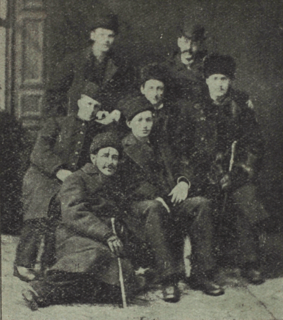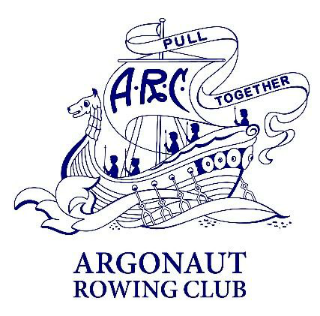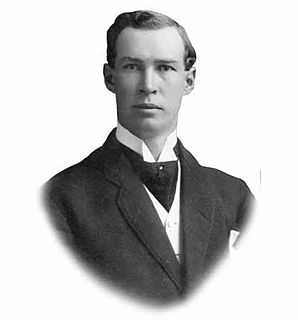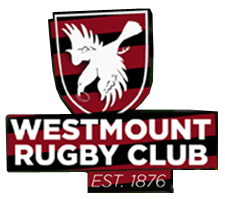Related Research Articles

Montreal Amateur Athletic Association is Canada's oldest athletic association, located in Montreal, Quebec, Canada. It was renamed as the Club Sportif MAA or just MAA in 1999 after a brush with bankruptcy, but is still widely known as the MAAA. In the late 19th and early 20th centuries, the MAA was one of the most important sporting institutions in Canada, and North America, with affiliated teams winning ice hockey's Stanley Cup and Canadian football's Grey Cup.

The Victoria Hockey Club of Montreal, Quebec, Canada was an early men's amateur ice hockey club. Its date of origin is ascribed to either 1874, 1877 or 1881, making it either the first or second organized ice hockey club after McGill University. The club played at its own rink, the Victoria Skating Rink in Montreal. The club was winners of the Stanley Cup in 1895 and held it until 1899, except for a period in 1896. The club remained amateur, splitting from the ranks of teams turned professional in 1908. The club was the first winner of the Allan Cup and continued to play until 1939, when it folded after its 65th season. The club often also fielded junior and intermediate teams.

Lionel Pretoria Conacher, MP, nicknamed "The Big Train", was a Canadian athlete and politician. Voted the country's top athlete of the first half of the 20th century, he won championships in numerous sports. His first passion was football; he was a member of the 1921 Grey Cup champion Toronto Argonauts. He was a member of the Toronto Maple Leafs baseball team that won the International League championship in 1926. In hockey, he won a Memorial Cup in 1920, and the Stanley Cup twice: with the Chicago Black Hawks in 1934 and the Montreal Maroons in 1935. Additionally, he won wrestling, boxing and lacrosse championships during his playing career. He is one of three players, including Joe Miller and Carl Voss, to have their names engraved on both the Grey Cup and Stanley Cup.

The Winnipeg Victorias were a former amateur senior-level men's amateur ice hockey team in Winnipeg, Manitoba, organized in 1889. They played in the Manitoba Hockey Association (MHA) in the late 19th and early 20th centuries. The Victorias won the Stanley Cup in February 1896, 1901 and January 1902 while losing the Cup in December 1896, February 1899, February 1900, March 1902, and February 1903. After the Stanley Cup became the professional championship, the Victorias continued in senior-level amateur play, winning the Allan Cup in 1911 and 1912.
Dey's Arena, also known as Dey Brothers Rink, Dey's Skating Rink and The Arena, were a series of ice rinks and arenas located in Ottawa, Ontario, that hold importance in the early development of the organized sport of ice hockey in Canada. It was the home arena of the Ottawa Hockey Club, variously known as the Generals, the Silver Seven and the Senators from the 1890s until 1923, although it is known that games were also played at the Rideau Skating Rink in the 1890s and the Aberdeen Pavilion in 1904. The rink and arenas were built by two generations of the Dey family, who were prominent in Ottawa at the time, with a thriving boat works business serving the lumber business. The Dey family also played hockey.
The Ontario Rugby Football Union (ORFU) was an early amateur Canadian football league. As its name implies, it comprised teams in the Canadian province of Ontario. The ORFU was founded on Saturday, January 6, 1883 and in 1903 became the first major competition to adopt the Burnside rules, from which the modern Canadian football code would evolve.

The Argonaut Rowing Club is an amateur rowing club in Toronto, Ontario, Canada. The club was founded in 1872. The current junior head coach is Connor Elsdon. In the past, the club fielded teams in ice hockey and football, and the football team continues today as the Toronto Argonauts of the Canadian Football League.
Toronto Parkdale was an amateur Canadian football and hockey club based in the Parkdale neighbourhood in the west end of Toronto. As a branch of the Parkdale Canoe Club established in August 1905, the club's hockey and football teams were nicknamed the Paddlers. They were also known colloquially as the West Enders, and as the Green and White, after the team colours.
The Hamilton Alerts were a Canadian football-rugby union team based in Hamilton, Ontario that played in the Ontario Rugby Football Union from 1911 to 1912. The club won the 4th Grey Cup in 1912, becoming the first ever team from Hamilton to win the Grey Cup and the first team from the ORFU to win the Cup.

Edwin Smith "Chaucer" Elliott was a Canadian sportsman and a Hall of Fame referee and linesman. He was the grandfather of Bob Elliott, one of Canada's most respected sports writers.

The Westmount Rugby Football Club is a Canadian rugby club based in Westmount, Quebec.

The Rideau Skating Rink was an indoor skating and curling facility located in Ottawa, Ontario, Canada. Consisting of a curling rink and a skating rink, it was one of the first indoor rinks in Canada. The Rideau Rink was scheduled to open on January 10, 1889, but unseasonably mild weather postponed the grand opening to February 1. It opened on January 25, 1889 for select V.I.P.s although this was a misunderstanding and should not have denied entry to season ticket holders. It was located on Theodore Street, at Waller Street, at the present location of the Arts Hall of the University of Ottawa, near the Rideau Canal.

The Arena, also known as Dey's Arena was an arena for ice hockey located in Ottawa, Ontario, Canada. It was the home of the Ottawa Hockey Club from 1908 to 1923. It was the third in a series of ice hockey venues built by the Dey family of Ottawa. At the time of its building, it was Canada's largest arena.
The Interprovincial Amateur Hockey Union was the premier amateur ice hockey league in Canada after the split between the amateur and professional ice hockey teams of the Eastern Canada Amateur Hockey Association (ECAHA) in 1908.
The Duquesne Country and Athletic Club ice hockey team, or Pittsburgh Duquesne, were an amateur, and later professional, ice hockey club based in Pittsburgh, Pennsylvania and were members of the Western Pennsylvania Hockey League (WPHL).
The Toronto Rowing and Athletic Association were an ORFU football team in the early 20th century. The team was founded in 1908 as Toronto Amateur Athletic Club and became the team of the Toronto Rowing and Athletic Association in 1912. The team won the ORFU championship in 1915, 1919 and 1920. In 1915 they played in the 7th Grey Cup, losing to the Hamilton Tigers.
The 1908 Toronto Argonauts season was the Argonaut Football Club's 11th season of organized league play since joining the Ontario Rugby Football Union in 1898, and its second season in the Interprovincial Rugby Football Union. The team finished in last place in the "Big Four" league with one win and five losses and failed to qualify for the Dominion playoffs.
The 1907 Toronto Argonauts season was the Argonaut Football Club's 10th season of organized league play since joining the Ontario Rugby Football Union in 1898, and its first season in the newly formed Interprovincial Rugby Football Union. The team finished in last place in the new "Big Four" league with one win and five losses and failed to qualify for the Dominion playoffs.

The North Avenue Ice Palace in Baltimore, Maryland, United States was one of the first examples of an indoor artificial ice rink in North America. It was located on North Avenue between Charles Street and Lovegrove Alley and extended north to 20th Street. It was constructed by the Arctic Skating Company, managed by Gerald T. Hopkins, Jr. The ice rink was used for pleasure skating and ice sports, including early games of ice hockey.
The Grand National Rink was an outdoor skating rink located in the Brockton Village neighbourhood of Toronto, Ontario, Canada from 1896 to 1902. At the time, it was the largest open-air rink in the city. Its location is now the site of the McCormick Playground Arena at McCormick Park in the Brockton Village enclave of Little Portugal.
References
- ↑ "Castilloux Gains Needed Weight for Bout With Mell on Friday". Montreal Gazette. May 14, 1946. p. 10.
- ↑ The Toronto city directory for 1892. Might's Directory. 1892. p. 1360.
- ↑ The Toronto city directory for 1899. Might's Directory. 1899. p. 1074.
- ↑ "Suckling and Company, Sale by Auction". Toronto Daily Mail and Empire. June 18, 1900. p. 9.
- ↑ "Torontos on CFLDB Statistics".
- ↑ "Torontos on CFLDB Statistics".
- ↑ Sandor, Steven (2007). Illustrated Guide to Hockey Sites & History: Toronto. Heritage House Publishing Co. p. 11.
- ↑ Harper, Stephen J. (2013). A Great Game. Simon Schuster Canada. p. 169.